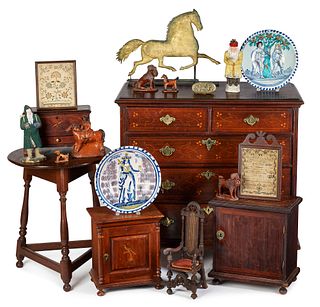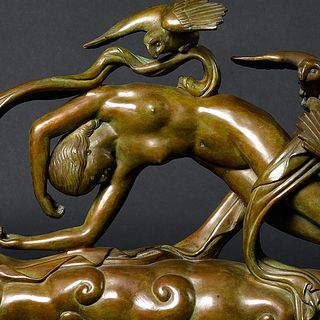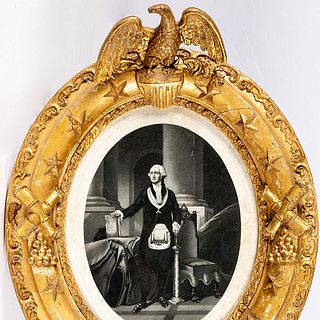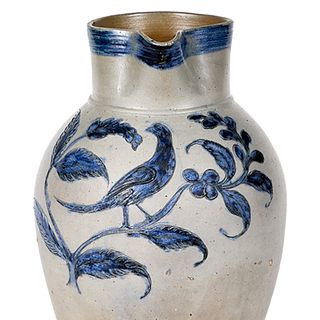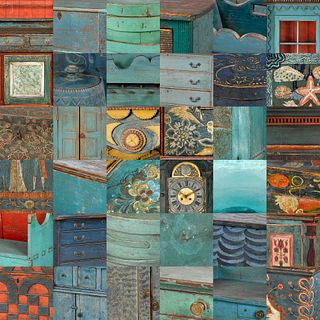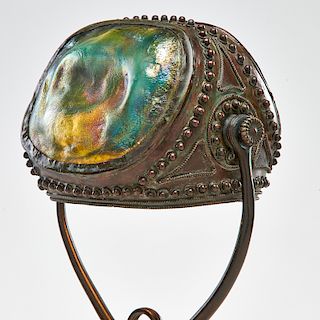Kentucky sugar chests
The sugar chest has been called the quintessential piece of Kentucky furniture. More than just decorative, sugar chests were functional. They needed to be, since sugar was once a scarce and expensive commodity.
Today, when we think of sugar the granulated form comes to mind, but sugar available from the late-18th to the mid-19th century came in hard, cone-shaped loaves. The loaves ranges in size; with those purchased for family use weighing between eleven and thirteen pounds. The manufacturing process entailed squeezing liquid from the sugar cane plant, with the remaining sucrose compressed into molds. The end product was the solid sugar sold to consumers. Sugar nippers were used to break off pieces from the cone, and then crushed those pieces into granules.
Sugar chests became the preferred way to store and secure the product. The decorative nature and formal look of the furniture in its various forms made it perfect for use in dining rooms or areas where guests were entertained.
The divided interior of sugar furniture allowed white and brown sugar to be stored separately. Some pieces of furniture also incorporated cubbies, doors, or drawers for spices, coffee, and even ledgers and bottles.
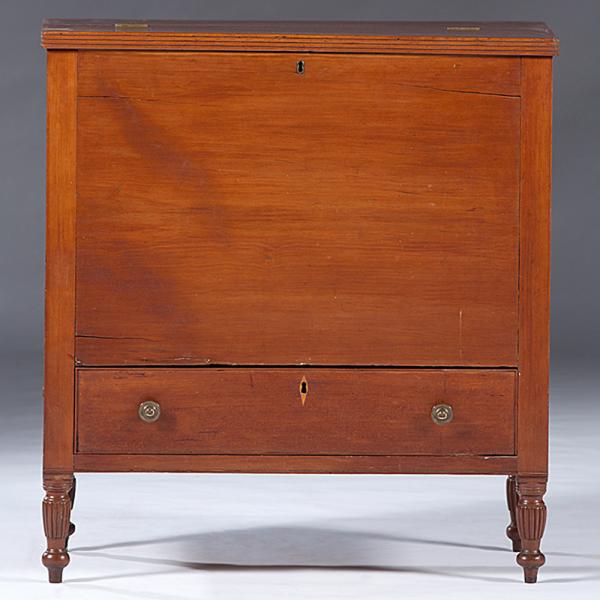
Here are the four most common types of sugar furniture from Kentucky, where the pieces were typically made of walnut or cherry.
1. Boxes on frames with straight legs
In its most recognizable form, a sugar chest consisted of a dovetailed box affixed to a stand or frame. This group generally dated from the 1790s through the 1820s and featured straight, tapered legs, characteristic of the early Federal period.
2. Boxes on frames with turned legs
Having bulbous, lathe-turned legs, these pieces became fashionable after 1815 and generally replaced the earlier, straight-leg style.
3. Paneled boxes
The sugar chests in this group were constructed either in the post-and-plank or rail-and-stile methods. In post-and-plank construction, a wooden board was tenoned directly into the legs. This method did not allow for expansion and contraction of the wood, often resulting in the wood splitting. Rail-and-stile construction permitted the horizontal and vertical wood members to contain a floating wooden panel. This technique allowed for movement of the wood, and helped prevent warping or cracking of the cabinet.
4. Desk forms
The sugar desk was fashioned after the slant desk. Interiors were sometimes fitted with small drawers, presumably for spice storage. The ability to use a sugar desk as writing furniture depended both on the configuration of the fallboard (whether hinged at the top or bottom) and the size of the piece. Some sugar desks also had a walnut bookcase top.
- Behind the Curtain: The Tony Walton Collection at Willow Auction House
- Fine Western & American Art: Coeur d’Alene’s November Sale Celebrates the Spirit of the West
- A Library of Curiosities
- The Poetry of Form: Jean (Hans) Arp’s Lasting Influence on Modern Art
- Modern Meets Antiquity: House of Craven’s Fall Modern Art & Design Signature Auction
- Diving Into History: Nation’s Attic’s Annual Auction Explores the Depths of Diving Innovation
- The Shelley Duvall Collection: A Legacy in Film and Imagination
- Raphael Soyer: The Poetic Realist of Everyday Life
- Eternal Brilliance: The Artistry of Rookwood Pottery
- A Tribute to Italian Modernism: A Landmark Design Sale by Circa Auction



 EUR
EUR CAD
CAD AUD
AUD GBP
GBP MXN
MXN HKD
HKD CNY
CNY MYR
MYR SEK
SEK SGD
SGD CHF
CHF THB
THB

